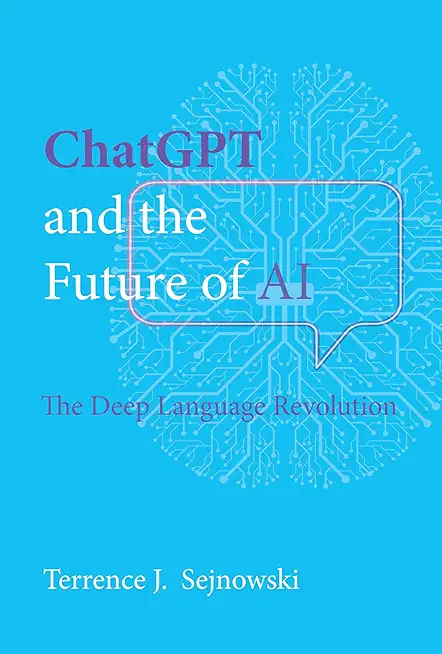Introduction to Machine Learning with Python Training in Stuttgart, Germany
Enroll in or hire us to teach our Introduction to Machine Learning with Python class in Stuttgart, Germany by calling us @303.377.6176. Like all HSG
classes, Introduction to Machine Learning with Python may be offered either onsite or via instructor led virtual training. Consider looking at our public training schedule to see if it
is scheduled: Public Training Classes
Provided there are enough attendees, Introduction to Machine Learning with Python may be taught at one of our local training facilities.
|
We offer private customized training for groups of 3 or more attendees.
|
||
Course Description |
||
| This course employs many advanced Python libraries to provide the student with a solid foundation of Machine Learning concepts and practices.
Course Length: 2 Days
Course Tuition: $1250 (US) |
||
Prerequisites |
|
| Python proficient. | |
Course Outline |
|
Introduction
Why Machine Learning?
Problems Machine Learning Can Solve
Knowing Your Task and Knowing Your Data
Advanced Python Basics
scikit-learn
Installing scikit-learn
Essential Libraries and Tools
Jupyter Notebook
NumPy
SciPy
matplotlib
pandas
mglearn
A First Application: Classifying Iris Species 13
Meet the Data
Measuring Success: Training and Testing Data
First Things First: Look at Your Data
Building Your First Model: k-Nearest Neighbors
Making Predictions
Evaluating the Model
Supervised Learning
Classification and Regression
Generalization, Overfitting, and Underfitting
Relation of Model Complexity to Dataset Size
Supervised Machine Learning Algorithms
Some Sample Datasets
k-Nearest Neighbors
Linear Models
Naive Bayes Classifiers
Decision Trees
Ensembles of Decision Trees
Kernelized Support Vector Machines
Neural Networks (Deep Learning)
Uncertainty Estimates from Classifiers
The Decision Function
Predicting Probabilities
Uncertainty in Multiclass Classification
Unsupervised Learning and Preprocessing
Types of Unsupervised Learning
Challenges in Unsupervised Learning
Preprocessing and Scaling
Different Kinds of Preprocessing
Applying Data Transformations
Scaling Training and Test Data the Same Way
The Effect of Preprocessing on Supervised Learning
Dimensionality Reduction, Feature Extraction, and Manifold Learning
Principal Component Analysis (PCA)
Non-Negative Matrix Factorization (NMF)
Manifold Learning with t-SNE
Clustering
k-Means Clustering
Agglomerative Clustering
DBSCAN
Comparing and Evaluating Clustering Algorithms
Representing Data and Engineering Features
Categorical Variables
One-Hot-Encoding (Dummy Variables)
Numbers Can Encode Categoricals
Binning, Discretization, Linear Models, and Trees
Interactions and Polynomials
Univariate Nonlinear Transformations
Automatic Feature Selection
Univariate Statistics
Model-Based Feature Selection
Iterative Feature Selection
Utilizing Expert Knowledge
Model Evaluation and Improvement
Cross-Validation
Cross-Validation in scikit-learn
Benefits of Cross-Validation
Stratified k-Fold Cross-Validation and Other Strategies
Grid Search
Simple Grid Search
The Danger of Overfitting the Parameters and the Validation Set
Grid Search with Cross-Validation
Evaluation Metrics and Scoring
Keep the End Goal in Mind
Metrics for Binary Classification
Metrics for Multiclass Classification
Regression Metrics
Using Evaluation Metrics in Model Selection
Algorithm Chains and Pipelines
Parameter Selection with Preprocessing
Building Pipelines
Using Pipelines in Grid Searches
The General Pipeline Interface
Convenient Pipeline Creation with make_pipeline
Accessing Step Attributes
Accessing Attributes in a Grid-Searched Pipeline
Grid-Searching Preprocessing Steps and Model Parameters
Grid-Searching Which Model To Use
|
Course Directory [training on all levels]
Technical Training Courses
Software engineer/architect, System Admin ... Welcome!
- .NET Classes
- Agile/Scrum Classes
- AI Classes
- Ajax Classes
- Android and iPhone Programming Classes
- Azure Classes
- Blaze Advisor Classes
- C Programming Classes
- C# Programming Classes
- C++ Programming Classes
- Cisco Classes
- Cloud Classes
- CompTIA Classes
- Crystal Reports Classes
- Data Classes
- Design Patterns Classes
- DevOps Classes
- Foundations of Web Design & Web Authoring Classes
- Git, Jira, Wicket, Gradle, Tableau Classes
- IBM Classes
- Java Programming Classes
- JBoss Administration Classes
- JUnit, TDD, CPTC, Web Penetration Classes
- Linux Unix Classes
- Machine Learning Classes
- Microsoft Classes
- Microsoft Development Classes
- Microsoft SQL Server Classes
- Microsoft Team Foundation Server Classes
- Microsoft Windows Server Classes
- Oracle, MySQL, Cassandra, Hadoop Database Classes
- Perl Programming Classes
- Python Programming Classes
- Ruby Programming Classes
- SAS Classes
- Security Classes
- SharePoint Classes
- SOA Classes
- Tcl, Awk, Bash, Shell Classes
- UML Classes
- VMWare Classes
- Web Development Classes
- Web Services Classes
- Weblogic Administration Classes
- XML Classes
Business Training Courses
Project Managers, Business Analysts, Paralegals ... Welcome!
Upcoming Classes
Gain insight and ideas from students with different perspectives and experiences.
- Introduction to Spring 6, Spring Boot 3, and Spring REST
15 December, 2025 - 19 December, 2025 - ASP.NET Core MVC (VS2022)
24 November, 2025 - 25 November, 2025 - Python for Scientists
8 December, 2025 - 12 December, 2025 - RED HAT ENTERPRISE LINUX SYSTEMS ADMIN II
8 December, 2025 - 11 December, 2025 - Fast Track to Java 17 and OO Development
8 December, 2025 - 12 December, 2025 - See our complete public course listing
Python Uses & Stats
Python is Used For:
Web Development
Video Games
Desktop GUI's
Software Development
|
Difficulty
|
Popularity
|
Year Created 1991 |
|
Pros
Easy to Learn:
The learning curve is very mild and the language is versatile and fast to develop.
Massive Libraries:
You can find a library for basically anything: from web development, through game development, to machine learning.
Do More with Less Code:
You can build prototypes and test out ideas much quicker in Python than in other language
|
Cons
Speed Limitations: It is an interpretive language and therefore much slower than compiled languages. Problems with Threading: Multi-threaded CPU-bound programs may be slower than single-threaded ones do to the Global Interpreter Lock (GIL) that allows only one thread to execute at a time. Weak on Mobile: Although, there are a number or libraries that provide a way to develop for both Android and iOS using Python currently Android and iOS don’t support Python as an official programming language. |
| Python Job Market |

Average Salary
|

Job Count
|

Top Job Locations
New York City Mountain View San Francisco |
|
Complimentary Skills to have along with Python
The potential for career growth, whether you are new to the industry or plan to expand your current skills, depends upon your interests:
- For knowledge in building in PC or windows, phone apps or you are looking your future in Microsoft learn C#
- For android apps and also cross platform apps then learn Java
- If you are an Apple-holic and want to build iOS and MAC apps and then choose Objective C or Swift
- Interested in game development? C++
- Data mining or statistics then go with R programming or MATLAB
- Building an operating systems? C
|






